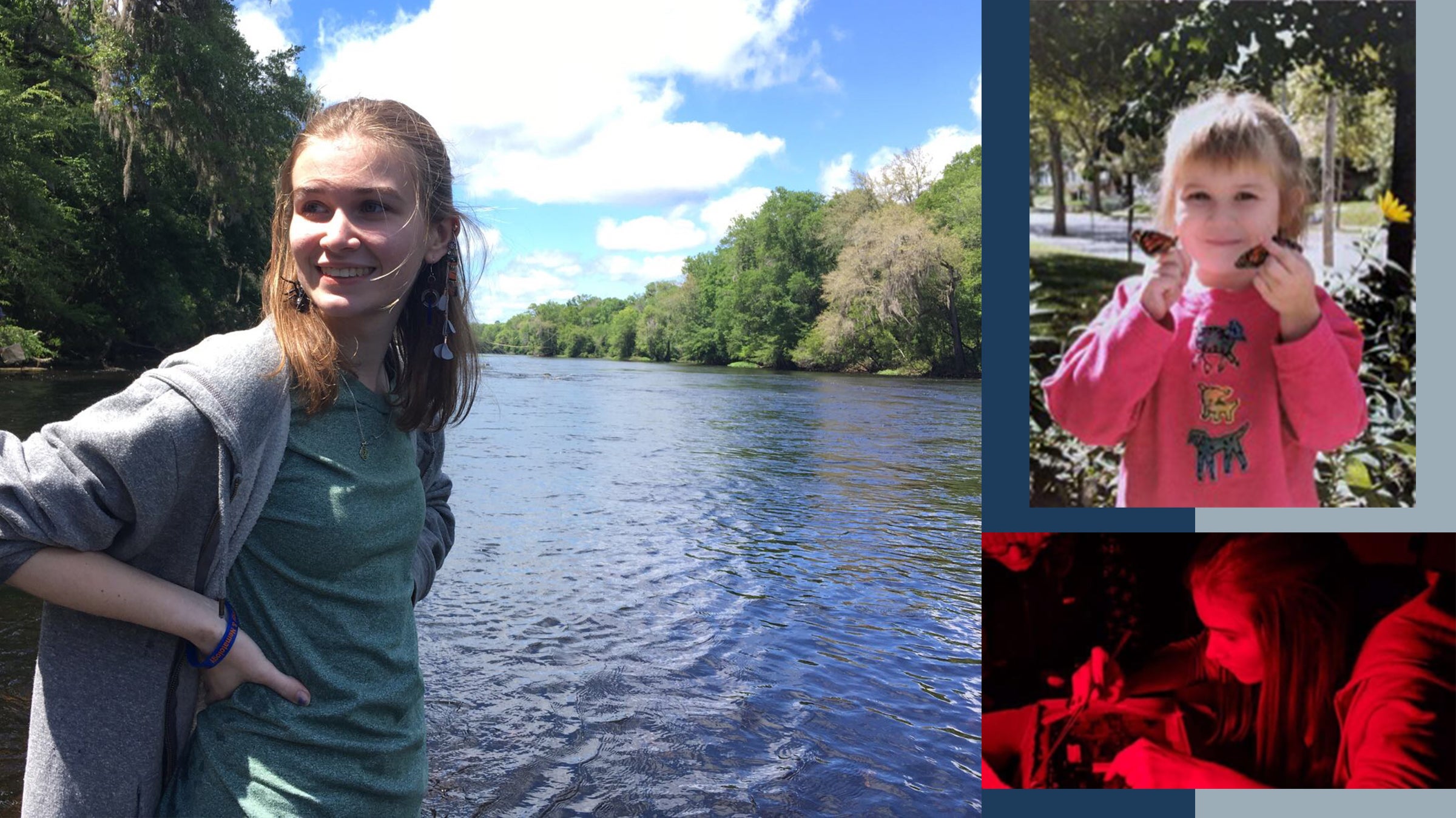
The Stengl-Wyer Endowment is the largest endowment in the history of the College of Natural Sciences. It supports UT Austin’s programming in ecology and biological research, with a focus on the study of the diversity of life and interactions between living things and their natural environments. Undergraduate students from across the country can apply for the Stengl-Wyer REU program: the Inclusive Student Training in Collections and field-based Topics (InSTInCT).
The goal of this 8-week program is to broaden the participation of historically-excluded groups in the natural sciences. Based on their interests, students are matched with a faculty member who introduces them to UT resources. Students also have the chance to meet other UT researchers, graduate students, and attend field trips. At the end of the program, students present their research, develop an understanding of graduate school applications, as well as what it's like to have a career as a scientist.
Last year marked the second year of the program and just as in the inaugural year, it gave students an opportunity for personalized research, to build community, and to see the vibrant city that is Austin, Texas.
Three students from the program share their experiences.

Autumn came to the program as a senior from the University of Louisville. During her time, she evaluated the usefulness of previously published and newly created characters for the identification of North American snakes. She did this using the compound bone and dentary, which are two bones found in the lower jaw. Magnuson did this by conducting a literature review, taking photographs of the bones using both a camera and stereo microscope, creating 3D models from CT scans, and making measurements.
For Autumn, one of the most impactful aspects of the InSTInCT program was the Biodiversity Collections at the Pickle Research Campus. “The site had specimens ranging from petrified wood to dinosaurs to modern specimens,” Autumn explains. “Learning about how biodiversity collections operate behind the scenes and seeing such a wide variety of organisms was amazing.”

Alexander came from California State University - Long Beach as a senior and studied the scaling relationship between sexually-selected traits and body size in leaf-footed bugs. For him, this involved quite a bit of fieldwork at the Brackenridge Field Laboratory (BFL) as well as a few trips to the Lady Bird Johnson Wildflower Center. At these field stations, he caught bugs from their wild host plants and reared them in a greenhouse. He also conducted microdissections of hind leg femoral tracheae as a potential explanation for how male bugs are able to maintain enlarged weaponry.
Alexander found that one of his most memorable moments of the program was spending time at BFL. “It was incredibly neat to be able to explore a piece of wilderness in the center of an urban population,” Alexander explained. “I am grateful to have spent most of my summer there and to have met the ever-so-charismatic Dr. Larry Gilbert. I had the opportunity to speak with him on multiple occasions and he gave me advice not only on animal husbandry, but also on conducting research in Latin America [which is] a major interest of mine.”

Rust came from Angelo State University as a junior and studied how climate change and biodiversity loss influence carbon sequestration in Texas plants. Her research focused on how certain Texas plant species' (Lupinus texensis, Ipomopsis rubra, and Bouteloua curtipendula) resource acquisition traits are affected by ecological factors. She analyzed both above and below ground biomass by means of weighing and using various programs, including ImageJ and RhizoVision.
When speaking about the program’s impact, Rust had this to say: “I was able to conduct my own research at largely my own pace. I gained valuable scientific and soft skills I can apply to various aspects of my life. In addition, I learned a great deal about graduate school that would've otherwise taken a long time to figure out on my own. Most memorably, I connected with my fellow interns on a unique level and say with confidence that I made lasting friendships worth their weight in gold.”
Not to be overlooked are the thoughts these three students had about why other students should apply to the program.
“I believe that participating in InSTInCT has been one of the best decisions of my undergraduate career,” Autumn says. “I was able to conduct research that I am passionate about and made great connections with others who are interested in topics relating to biodiversity. I am also more prepared to apply to graduate school and have a greater awareness of the resources available.”
“The InSTInCT REU provides the quintessential peek into the world of graduate school and is incredibly valuable in preparing you for your future,” says Alexander. “It not only provides you with professional development and informs you about the process of applying to graduate school, but it also gives you the opportunity to grow as a scientist.”
“Go for it!” Rust advises.“The InSTInCT program offers a wealth of resources for an upcoming scientist. [Austin] is fun to explore with fellow interns and UT Austin offers quality research for people of all backgrounds.”



